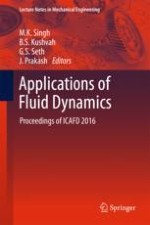2018 | OriginalPaper | Buchkapitel
Numerical Simulation of Partially Covered Hartmann Whistle in a Sonic-Underexpanded Jet
verfasst von : Arnab Samanta, S. Narayanan, Ashish Narayan, Shailesh Kumar Jha
Erschienen in: Applications of Fluid Dynamics
Verlag: Springer Singapore
Aktivieren Sie unsere intelligente Suche, um passende Fachinhalte oder Patente zu finden.
Wählen Sie Textabschnitte aus um mit Künstlicher Intelligenz passenden Patente zu finden. powered by
Markieren Sie Textabschnitte, um KI-gestützt weitere passende Inhalte zu finden. powered by
